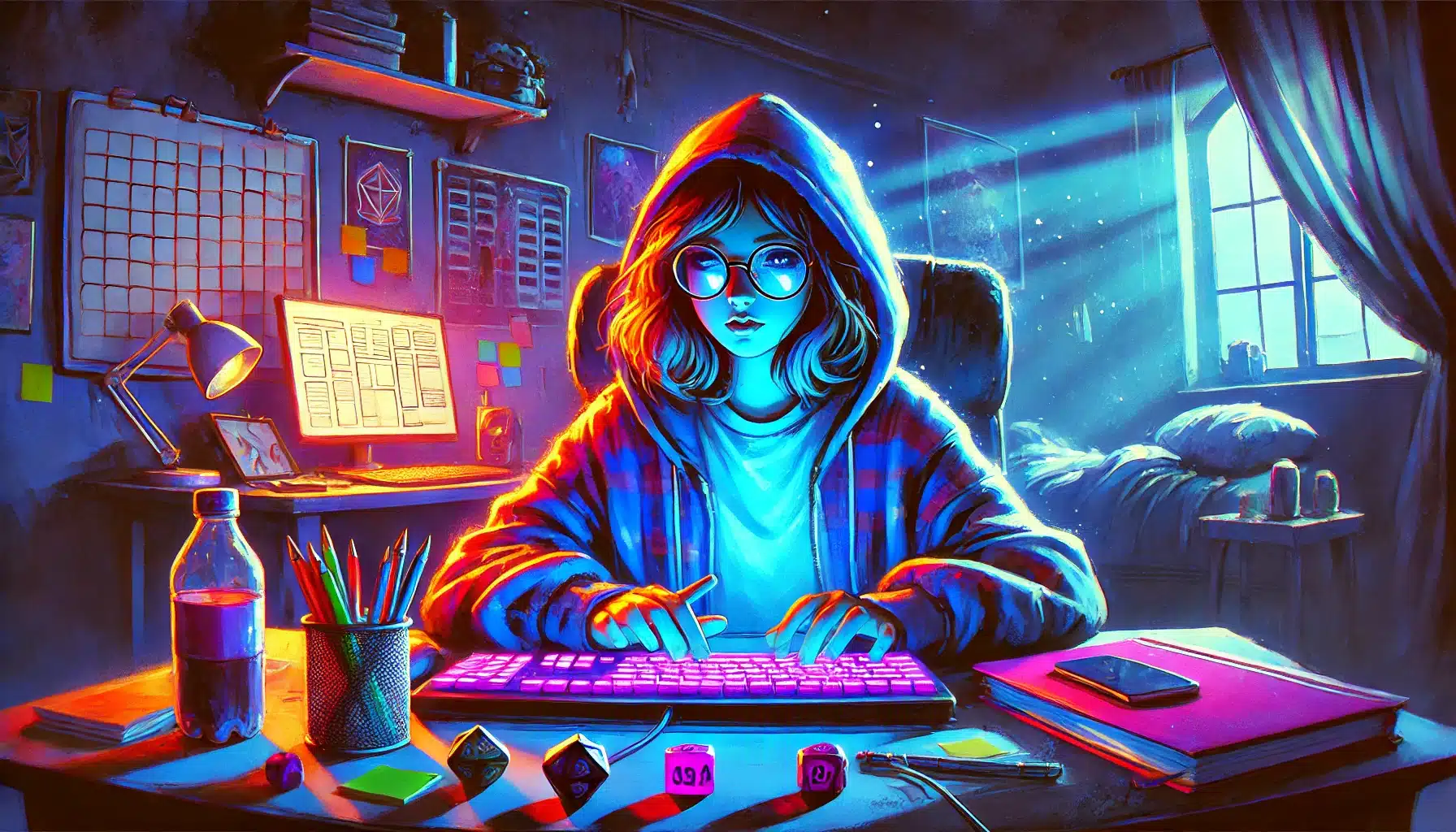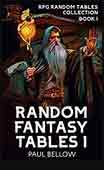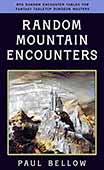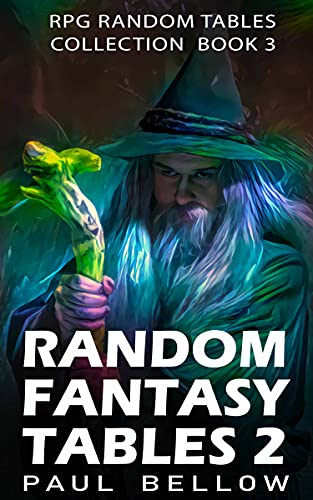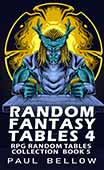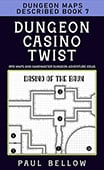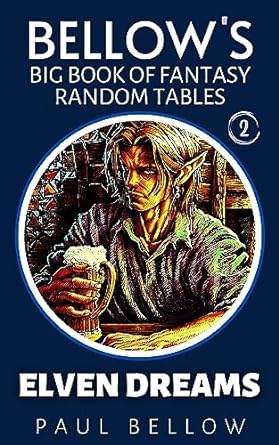The Best RPG AI Tools for RPGs in 2025
Step into any gaming circle in May 2025 and you’ll quickly realize the AI revolution isn’t on the horizon—it’s here, remaking the landscape of tabletop role-playing. From humble solo expeditions to epic campaign sagas, artificial intelligence has slipped its digital fingers into nearly every facet of the gaming experience. Where once the Game Master juggled every detail, now a host of AI tools extend a helping hand: assisting with worldbuilding maps, spinning up fully-formed NPCs, and even generating evocative portraits or intricate dungeons on the fly. This guide is your definitive window into the tools that are setting imaginations ablaze.
The appeal spans every corner of the RPG spectrum. Solo players, once at the mercy of static choose-your-own-adventure books, can now command a reactive AI narrator. GMs, long burdened with campaign prep, find their prep times slashed—AI assembles stat blocks, backstories, and shop inventories at a moment’s notice. Even game developers find themselves empowered by memory-aware AI NPCs capable of fluid, dynamic conversations and emergent storytelling. In this new era, your creative whims are limited less by logistics than by the scope of your curiosity.
Today’s arsenal of AI RPG tools divides neatly into several categories, each flexing its own strengths: narrative generation (where words rule and stories breathe), character and NPC creation (combining stats, personalities, and portraits), visual asset design (from handout art to battle maps), worldbuilding engines (populating realms, lore, and myth), and game development applications (for crafting the digital RPGs of tomorrow). Every tool approaches the tapestry differently, some focused on mechanics and rules, others painting in metaphor and mystery.
Yet, if there’s a unifying theme to this technological upswing, it’s this: AI tools don’t replace imagination—they amplify it. No algorithm can duplicate the unique spark of your group around the table, but it can clear away the drudge work and supercharge your sessions with inspiration at every turn. Whether you’re a GM hungering for more spontaneous sessions or a worldbuilder sculpting kingdoms before breakfast, AI stands ready as co-pilot, not overlord.
So sharpen your dice, prime your notebook, and read on—a new pantheon of digital tools awaits, each promising to broaden what’s possible in the games we love, without ever stealing the soul of your story.
AI for Narrative Generation and Game Mastering
It’s a tantalizing era for storytellers: AI-powered narrative engines can now rival even the most improvisational human GMs, serving as tireless story-weavers and responsive Game Masters. The capabilities of large language models—think GPT-4 and beyond—have unlocked new ways to shape, guide, and animate your adventures. These tools don’t just echo back canned text; they interpret, riff, and build on your input in dazzlingly nuanced ways.
Imagine entering a mysterious tavern and having the AI describe not just the flickering lanterns, but the subtle tension between the barkeep and the mysterious traveler in the corner. These systems react to your every prompt: push the story in an unexpected direction, and they’ll run with it. Where past solo RPG tools felt like clever Mad Libs, today’s narrative engines mean your choices matter, your questions reshape the very fabric of the scene, and your companions exhibit unique (sometimes even evolving) personalities.
Try my AI Tabletop RPG generators...and an extensive library of content!
The appeal for solo players is immediate—no longer dependent on a human GM, you can plunge into adventures at any hour. For beleaguered Game Masters, narrative AI takes on the mental load of planning countless NPCs, generating in-the-moment dialogue, or rescuing a session veering off course. These tools support improvisation and grant even the least-confident storyteller a safety net, letting the group’s collective creativity take center stage.
In practical terms, the best AI narrative tools can both co-create (offering prompts, story hooks, and dialogue) and outright narrate (acting as dungeon master, storyteller, or questgiver). Some focus on open-ended, genre-agnostic play; others are tailored for fantasy realms or specific rule sets. The most advanced can remember and draw upon previous sessions, enhancing immersion and continuity.
Whether you crave endless solo escapades, want to inject more chaos into group play, or need a secret weapon for campaign prep, AI-powered narrative tools have something to offer. Let’s delve into the major players shaping the narrative frontier—and explore how human creativity and machine intelligence are converging to deliver stories with real, unpredictable heart.
⚔️ Fantasy RPG Random Tables Books
Make life as a Gamemaster easier…
If you play Dungeons & Dragons, Pathfinder, or other fantasy RPGs, this
RPG random tables series
is packed with encounters, NPCs, treasure, and more. Available in eBook or print—either way, you’ll have a wealth of adventure ideas at your fingertips.
AI Dungeon
Since its debut, AI Dungeon by Latitude has become virtually synonymous with AI-driven storytelling for RPGs, blazing a path few have rivaled. The concept is seductively simple: type anything you can imagine, and the AI spins it into a living narrative—a swordfight on a pirate moon, a time-lost wizard’s duel, even a noir romance on the streets of a magical city. The game’s text prompt system grants boundless freedom, allowing you to experience wild, genre-defying adventures alone or with friends.
AI Dungeon has evolved over the years into a bustling hub for collaborative and solo play. Community scenarios—crafted and shared by players worldwide—expand the possibilities even further, while the multiplayer mode lets entire groups tell stories together, taking turns guiding the narrative or throwing curveballs at the AI and each other. With the “Ultra” subscription tier, users unlock the power of more sophisticated models and longer context memory, meaning your ongoing campaign remains coherent and the AI can recall vital past events or character details.
Common Use Cases:
- Solo play: Explore endless adventures with a responsive AI GM
- Creative writing: Draft short stories, novel scenes, or experimental narratives
- Collaborative play: Group sessions where each player controls a character or part of the story
- Genre-agnostic storytelling: From high fantasy to gritty sci-fi or surreal dreamscapes
- Flexible narrative experiments: Push the bounds of conventional RPG structure or fuse genres on the fly
Pricing: AI Dungeon offers a free tier with limited game sessions and shorter memory span. Premium subscriptions range from $10/month (Adventure) to $29.99/month (Legendary Ultra) with premium AI, upgraded memory, and image generation, while the top “Ultra” tier goes up to $50/month for the most advanced models and the richest user experience.
For those seeking the endless “what if” of fantasy storytelling, AI Dungeon is in a class of its own. Its freeform input system means no idea is too wild, and its thriving community ensures you’ll never run out of scenarios or collaborators. While some users bump into the limitations of the lower subscription tiers (shorter memory, less coherent long-form stories), those at the top tiers enjoy immersive, sprawling campaigns rarely matched elsewhere.
AI Dungeon’s open-ended, genre-agnostic approach makes it indispensable for anyone hungry for narrative variety—solo roleplayers, writers, casual GMs, and dreamers alike. As part of your RPG toolkit, it serves as a narrative playground: perfect for late-night improv, inspiration, or just chasing stories where no session has gone before.
Saga AI
Saga AI presents a fresh, mobile-first twist on AI narrative gaming. Designed with on-the-go roleplay in mind, Saga lets you conjure stories and interact with both stock and custom characters in a matter of seconds. Whether you favor classic fantasy, slice-of-life drama, or something entirely unexpected, Saga delivers responsive, on-demand text adventures that fit into your daily rhythm—waiting at the bus stop, hiding at lunch, or winding down at night.
Saga thrives on accessibility and flexibility. Its intuitive mobile and web interfaces lower the barrier for entry: you can launch into a scenario, interact with your favorite literary heroes, or invent an original setting without any prior prep. Dynamic AI characters—each with quirks, backstories, and evolving personalities—respond naturally to your input, driving the story in new and sometimes delightfully unpredictable directions.
Common Use Cases:
- Fan-fiction-style storytelling: Embody, meet, or remix favorite fictional characters in custom scenarios
- Solo gaming with dynamic characters: Create and explore adventures without a GM
- Casual RPG scenarios: Low-commitment, bite-sized play (alone or with friends) anywhere, anytime
Saga AI is currently free to play at the basic level, with in-app purchases for additional premium content and features likely in the near future. Both web and mobile versions are available, making it one of the most accessible AI RPG platforms around.
Saga AI’s potential lies in its frictionless entry: new users, casual fans, and even hesitant roleplayers can sample immersive narratives without spending a dime or learning complex rules. Its appeal is strongest for the modern, mobile-first gamer—those who crave the fantasy of RPGs but don’t have hours to dedicate to traditional sessions.
In an era where pockets of free time are more common than free evenings, Saga AI fills a treasured niche. Its easy interface and creative scope mean anyone can dip in and out of storytelling, making it ideal for both young audiences and seasoned narrative tinkerers.
Hidden Door
Hidden Door sits on the cusp of release, promising a boldly social RPG storytelling experience built from the ground up for collaborative group play. The vision is intoxicating: a virtual parlor where friends or strangers can gather around a shared table, crafting sprawling stories as the AI handles the connective tissue—consistency, world tone, and scene transitions. Hidden Door’s AI narrator weaves contributions from each participant into a coherent, living world.
⚔️ Fantasy RPG Random Tables Books
Make life as a Gamemaster easier…
If you play Dungeons & Dragons, Pathfinder, or other fantasy RPGs, this
RPG random tables series
is packed with encounters, NPCs, treasure, and more. Available in eBook or print—either way, you’ll have a wealth of adventure ideas at your fingertips.
This isn’t just a digital GM, but a backstage director keeping story threads untangled, motifs consistent, and NPCs true to character. Sessions can blend genres fluidly—fantasy meets noir meets time travel—while maintaining narrative integrity. Players can choose from pre-built settings or collaborate to create custom worlds and characters on the fly. Early previews emphasize playful improvisation and shared world ownership.
Expected Use Cases:
- Collaborative story play among friends: Group narrative sessions where everyone shapes the plot
- Genre blending: Mash up genres, settings, and tones without losing coherence
- Campaign-style group experiences: Multi-session narratives guided by an AI narrative backbone
Hidden Door is currently in closed beta, with general release expected in late 2024 or early 2025. Pricing is yet to be finalized, but a subscription model is highly likely.
The excitement around Hidden Door stems from its collaborative philosophy—this isn’t about a lone player with an AI GM, but true group storytelling with AI as a referee and enhancer. If you’ve ever wished for a GM that could keep pace with five off-the-wall players and still deliver a seamless story, this platform is ready to grant your wish.
In the context of AI’s role in the hobby, Hidden Door signals the next evolution: not replacing the GM but making group play smarter, more inclusive, and more experimental. It’s a beacon for anyone curious about what co-creation can look like in the AI era.
Kindroid
Kindroid charts a different course in the AI RPG space—rather than focusing solely on worlds or plots, it centers the experience around “Kin”: persistent AI characters designed to be co-creators, NPCs, emotional confidants, or all three. Each Kin is more than a chat bot: they have evolving memories, unique personalities, and can engage through both text and generated voice/images, creating a holistic sense of presence.
Players can raise characters, engage in solo narratives, or even simulate campaign planning by conversationally workshopping ideas with their Kin. The ability to inject nuance—through emotional connections, voice acting, or even digital portraits—makes Kindroid unique among AI RPG tools, blurring the line between roleplay partner and digital companion.
Common Use Cases:
- Solo roleplay with a Kin: Continuous adventures or emotional narratives with a persistent AI partner
- Campaign planning: Bounce ideas or co-create scenarios in dialogue with your Kin
- Building emotionally resonant NPCs: Create rich, persistent characters for tabletop campaigns
Kindroid follows a freemium model: basic text interaction is free, while premium subscriptions (app-based, on mobile and web) unlock advanced features like memory extension, voice generation, and AI-generated images.
For introspective storytellers, character-driven campaign planners, and anyone seeking deeper AI “companionship,” Kindroid brings something special. It’s less about mechanics or plot flows and more about building relationships—narrative, creative, or emotional—with AI characters that evolve alongside your own ideas.
Kindroid slips into a niche that balances narrative depth and accessibility. If you’re searching for an AI co-creator who doubles as muse, GM, and confidant, you’ll find yourself returning again and again—whether to flesh out NPCs or just unravel the next chapter in your one-on-one adventure.
ChatGPT & Custom AI GMs
Few tools are as versatile—or as DIY-leaning—as ChatGPT and similar large language models when pressed into service as ad hoc Dungeon Masters. While not marketplace games in their own right, these models can be “prompted” into acting as GMs, improvising descriptions, inventing puzzles, generating in-character dialogue, or even facilitating full solo campaigns. With presets like “DungeonMasterGPT” or “YesChat GM,” users around the world have shaped their own AI-driven RPG experiences.
ChatGPT adapts easily to the user’s intent: ask it to narrate a castle siege, create a quirky NPC, or fill in the details of a homebrew world. More advanced users have developed system-aware prompts—special scripts that bind the AI to rulesets like D&D 5e or Pathfinder, making it a semi-competent substitute for campaign prep, creative blockage, or just on-the-fly story needs.
Try my AI Tabletop RPG generators...and an extensive library of content!
Common Use Cases:
- Campaign prep: Generate NPCs, quest hooks, or area descriptions
- Session improvisation: Fill in details as players wander “off-map”
- Solo adventures: Play out entire sessions with the AI as GM
- System-specific assistance: D&D 5e, Pathfinder, OSR, and more with rule-aware prompts
Pricing follows the ChatGPT model: free access for GPT-3.5, with a $20/month ChatGPT Plus subscription unlocking GPT-4’s improved memory and coherence. Third-party platforms like YesChat offer community-driven GM presets, often for free.
For tech-savvy GMs and narrative experimenters, the flexibility of ChatGPT is nearly unmatched. If you’re willing to tinker with prompts or layer on homebrew rules, there’s nothing stopping you from running an entire campaign with an AI “co-GM.” The flip side? You’re responsible for error correction, system knowledge, and sometimes managing the AI’s wilder flights of fancy.
ChatGPT and its kin are best seen as “toolboxes” rather than finished games. Whether you’re in need of a pinch hitter during prep, stuck on dialogue, or determined to solo an entire campaign, general AI GMs invite endless experimentation and reward those who aren’t afraid to push boundaries.
AI Tools for Character Creation & NPCs
For ages, the sharpest GMs and most imaginative players spent untold hours building unique heroes and compelling foils—stat blocks, personalities, richly detailed baggage, and distinctive looks. Now, AI has stepped in as a more-than-capable collaborator, supercharging the process and leaving time for what matters most: storytelling and immersion. In 2025, character generators powered by advanced language models and image synthesis tools save prep hours while sparking endless “what ifs.”
No more wrestling with fill-in-the-blank name generators or flavorless stat blocks. AI-driven tools can produce system-agnostic PCs with complex personalities or D&D 5e-perfect NPCs, complete with gear and spells. Some even pair evocative backstories with portraits, so your players meet fully-realized characters at the table or online. This symbiosis—mechanics, flavor, and image—is breathing fresh life into character creation.
For overworked GMs, these platforms are a godsend: when players inevitably wander off the map, it’s never been easier to pull a memorable shopkeeper or a secretive rival out of thin air. Players too benefit, replacing the stress of character genesis with inspiration and a sense of collaborative creation with the AI. Need a prompt for your next protagonist? A quirk for your sidekick? A tragic flaw for your villain? There’s a generator for that.
The field is rich and diverse—some tools are text-only, laser-focused on D&D 5e stats or narrative backgrounds, while others cycle between genres or even combine text and visuals in a unified package. The best encourage you to tinker, iterate, and surprise yourself.
Here’s a breakdown of today’s most potent tools for creating personalities and populating your worlds, whether you run strict RAW campaigns or embrace narrative-first play.
LitRPG Adventures Workshop
Paul Bellow’s LitRPG Adventures platform has become the gold standard for AI-powered RPG generators. Marrying state-of-the-art language models with deep, genre-savvy prompts, it offers an array of tools: from instant character bios and NPC generators to quests, tavern tales, rumors, and shop inventories. You can select or randomize nearly every trait—class, race, alignment, personality—and receive output that’s both mechanical (stats, abilities) and narrative (bios, goals, secrets).
Integration with DALL·E 3 means you’re not limited to the written word: a single click transforms your AI-generated noble or villain into a custom portrait, ready for use as a handout or token. The pre-built library—now numbering over 100,000+ NPCs, locations, quests, and more—serves as a trove for those pressed for time or seeking inspiration.
Use Cases:
- Instant NPC creation during sessions: Summon memorable, vibrant NPCs on demand
- Deep backstories for new PCs: Inspire character-driven play with rich flavor text
- Worldbuilding inspiration: Tap into thousands of assets to seed campaigns or spark new adventures
Pricing: Access begins at $5/month for 700 credits, with a $50/year plan for regular users. Newcomers can try a $6 starter pack for a low-risk taste of the full suite. While the focus is on fantasy and D&D/5e, creative GMs will find plenty that works across genres.
LitRPG Adventures excels through polish and comprehensiveness. Whether you focus on D&D 5e or hybrid fantasy, the sheer range and quality of content let you bring any persona or plotline to life in seconds. It’s not just a generator; it’s a living, ever-growing archive for quick inspiration or detailed planning.
⚔️ Fantasy RPG Random Tables Books
Make life as a Gamemaster easier…
If you play Dungeons & Dragons, Pathfinder, or other fantasy RPGs, this
RPG random tables series
is packed with encounters, NPCs, treasure, and more. Available in eBook or print—either way, you’ll have a wealth of adventure ideas at your fingertips.
For GMs and writers, this platform is an “always open” creative workshop. The blend of instant results, system-specific content, and visual assets makes it indispensable—especially for those aiming to keep sessions snappy, worlds detailed, and stories fresh.
Mythovate AI
For those who demand not just creativity but strict D&D 5e compliance, Mythovate AI is an up-and-coming gem. Designed by a single developer but quickly grabbing attention, it serves as an engine for system-accurate NPCs and PCs, complete with the crunchy bits: AC, HP, spell lists, gear, proficiencies, and even secret motivations or dark pasts. Unlike most AI generators that err toward narrative, Mythovate balances rules rigor with often-surprising character depth.
Rapidly evolving through the r/dndai subreddit, the tool allows for the instant creation of game-ready monsters, allies, or villains—each output ready to drop into a session with minimal tweaks. The AI can inject custom secrets or complications for richer in-play drama, and GMs can filter by CR, role, or even narrative archetype.
Use Cases:
- Balanced monsters: Beef up encounters with adversaries that fit your party’s level
- Playable NPCs: Drop in friendly rivals, allies, or backup characters with ready-to-run sheets
- Campaign-ready villains or allies: Fully formed stat blocks and flavor for recurring roles
Currently, Mythovate AI is a hobby project—the tool isn’t commercialized, but it’s freely available to the community. Expect this to expand as demand for system-validated AI generation grows, potentially branching into other RPG rulesets over time.
Mythovate stands as a bridge between creativity and mechanical accuracy. For GMs who want the flavor of AI-driven bios with the assurance of balanced stats, it’s a massive leap forward—especially for prepping encounters or populating entire regions with believable, “legal” opponents and allies.
Watch this space: if you’re a rules lawyer and story lover, Mythovate’s hybrid approach could mark the future of character and monster generation across multiple systems.
ChatGPT NPC Generators & Others
Increasingly, GMs are turning to ChatGPT and similar language models as on-demand NPC factories. A few well-crafted prompts—inputting details like race, job, quirk, or secret—yield vivid personalities, distinctive dialogue, and even session notes that double as roleplaying guides. Community tools, often built around GPT APIs, wrap user-friendly interfaces around this power, allowing you to churn out characters by the dozen.
Smart prompt engineering is the heart of this movement. Need a mysterious innkeeper with a love for bad poetry and a hidden criminal past? Prompt away. Want a mischievous fae who trades riddles for favors? The AI will draft dialogue, give motivation, and even suggest unique speech patterns. Some web tools further automate this, offering slider-based trait selection or ensemble generators.
Use Cases:
- Populating taverns: Fill a bar with memorable one-liners or secretive patrons
- Recurring side characters: Build up a rich, persistent supporting cast
- Generating antagonists with hidden motives: Enjoy twisty, layered villains
Costs swing by platform: some web-based generators are free, while more advanced GPT-powered apps or API calls may rack up fees, though generally affordable for occasional or session-based use.
The real power here is flexibility. Under tight prep deadlines, AI NPC generators turn hours of work into minutes. You needn’t use every result verbatim—tweak, remix, or stockpile for future sessions. Experimentation is encouraged: the more creative your input, the more unique the output.
General AI models may not always stick to strict system stats, but for those prioritizing dialogue, flavor, and spontaneity, these tools are a fast track to fully stocked worlds and vibrant interactions.
Visual NPC Generators (Portraits)
AI art has become the GM’s secret weapon in recent years. Platforms like Artbreeder, MidJourney, and Stable Diffusion offer stunning, custom character portraits that can be dropped into campaigns as handouts, virtual tokens, or simple inspiration boards. The process is equal parts mad science and magic: “breed” faces, adjust sliders, or craft detailed prompts to create the perfect hero, villain, or enigmatic stranger.
Some platforms—Kindroid, Rolepl.ai—now pair text bios with matching AI-generated visuals, creating a holistic NPC profile in one go. Others focus exclusively on art: Artbreeder overlays faces, MidJourney and Stable Diffusion use prompt-based generation, and DALL·E provides further stylistic range. Top-down tokens for virtual tabletops can be generated in seconds, streamlining both in-person and digital play.
Use Cases:
- Hero token generation: Give every PC or major NPC a face
- Face reveals for plot-important NPCs: Show, don’t tell, when the villain takes the stage
- Concept art for new characters: Use visuals as creative prompts or reference for descriptions
Pricing varies: MidJourney requires a monthly subscription, DALL·E is credit-based, Stable Diffusion is free or pay-per-image (often self-hosted). Many platforms offer free trials or limited-use tiers for experimentation.
The impact on immersion is dramatic—suddenly, even minor NPCs carry narrative weight when players can see them. AI-generated portraits may veer into the surreal or uncanny, but evolving models mean consistency and style matching improve with each update.
For groups craving visual flair, these tools are a creative multiplier. The best results come when GMs embrace a spirit of experimentation, using AI images as a launchpad for memorable, session-defining faces.

AI for Worldbuilding and Campaign Planning
To build a world is to breathe life into a thousand moving parts: cities with tangled politics, magic systems with arcane logic, and quests that tie it all together. AI now stands as both muse and builder, ready to draft lore, design dungeons, or invent cultures as quickly as you can ask. The boundary between improvisational generation and detailed campaign planning has begun to blur.
The new breed of worldbuilding tools is impressively flexible. Need a new town because your players just blitzed past your notes? AI has you covered—names, shops, rumors, and even detailed NPCs pour forth in seconds. Want to structure the intricate web of a homebrew pantheon, or organize records of all your campaign’s ongoing threads? There’s an AI for that too, helping transform notes into living, navigable lore.
Some platforms focus on generating raw content—locations, legends, encounters; others assist with the bigger picture, helping you chart, connect, and reference these elements as your campaign evolves. The best blend procedural rigor (think random tables and mapbuilders) with the storytelling nuance only a true language model can achieve. Gone are the days when “improv” meant winging it—now, you improvise with a co-author whispering fresh ideas into your ear.
The flavor of each tool varies: detailed fantasy worlds, gritty sci-fi empires, or nebulous mythic structures, all generated and managed with shocking speed. As GMs stretch for higher-level organization or more organic content, AI is becoming both a safety net and a creative partner.
Here’s where the most impactful worldbuilding engines stand in mid-2025.
LitRPG Adventures Workshop (Worldbuilding Tools)
LitRPG Adventures isn’t just about characters—its reach extends into every crevice of campaign management. The platform’s catalog of generators lets GMs whip up everything from sprawling cities and haunted dungeons to tavern menus, quest chains, shop inventories, and even random spells. Tailored to D&D 5e and broader fantasy, it’s the one-click solution for both high-level prep and in-session emergencies.
⚔️ Fantasy RPG Random Tables Books
Make life as a Gamemaster easier…
If you play Dungeons & Dragons, Pathfinder, or other fantasy RPGs, this
RPG random tables series
is packed with encounters, NPCs, treasure, and more. Available in eBook or print—either way, you’ll have a wealth of adventure ideas at your fingertips.
A key strength is modularity: use the generators to build the backbone of your world in advance, or lean on them mid-session when your players take an unexpected path and demand details. Every output blends plausible mechanics with evocative flavor, so you’re never left with bland or generic results.
Use Cases:
- Drafting quest hooks: Toss out story seeds and side missions with a click
- Detailing new towns: When the party strays, generate cities, NPCs, and local color on the spot
- Campaign map building: Layer lore and background for entire regions
Pricing matches the character/NPC tools: $5/month grants full access to all generators, or $50/year for committed worldbuilders. The immense prebuilt library alone is worth the fee, saving countless hours of prep.
LitRPG Adventures is as close to a “GM backbone” as you’ll find—a robust, flexible worldbuilding suite that adapts to any style of fantasy play. The prebuilt content pool ensures that, even on a tight schedule, you’ll deliver rich, textured worlds with ease.
For GMs who value breadth and depth, this platform takes much of the heavy lifting out of campaign prep, freeing your creativity for those story beats that only a living group can invent.
Rolepl.ai (AI Campaign Manager)
Rolepl.ai is redefining world and campaign management by pairing advanced generation with ongoing campaign tracking and lore consistency. Built around the GAiA assistant, it helps GMs chart adventure arcs, generate scene-by-scene progressions, and maintain ironclad continuity throughout long, intricate campaigns. Unlike static generators, Rolepl.ai acts as a true co-GM—suggesting plot twists, managing session notes, and tracking every NPC, prop, and plot thread.
The system’s lore tracker is interactive, helping you build and reference a living world bible as your story evolves. GMs can generate and weave together adventure hooks, environments, and full NPC profiles in real time.
Use Cases:
- Collaborative campaign design: Iterate on stories and world elements with AI input
- Long-form session prep: Chart session outlines, branching scenes, and lasting consequences
- Lore mapping: Connect characters, events, and settings visually and textually
- On-the-fly GM support: Call up references or improvise as play unfolds
Currently in alpha, Rolepl.ai is free to use for early adopters, with a subscription model likely as features mature.
More than just a content spigot, Rolepl.ai offers a glimpse of the next-gen GM aid: an active, responsive second brain for keeping sessions on-track and worlds consistent. Its unique collaborative features make it equally useful for creative campaign design, immersive session prep, and real-time improvisation.
While the platform is still developing, its promise is clear—imagine GMs who never forget a detail, always have a new twist ready, and can adapt to player chaos with supernatural grace.
Procedural Generators vs AI
Classic procedural generators—think Donjon’s dungeon builder or Azgaar’s Map Generator—have long been the bedrock of worldbuilding, spitting out maps, encounter tables, and random names with mathematical precision. But the 2025 landscape is increasingly hybrid, with procedural scaffolds deepened by the creativity of AI narrative models.
Try my AI Tabletop RPG generators...and an extensive library of content!
Modern tools now combine the brute force of procedural algorithms (instantly assembling dungeons, world maps, or encounter lists) with the flavor and adaptability of machine learning. Add a few AI-powered bells and whistles—like lore snippets or richly annotated map legends—and yesterday’s skeletal output grows flesh and character.
Hybrid Example Use Cases:
- Lore annotation on procedural maps: Click a town, see AI-written histories or legends
- AI-generated room descriptions: From “10×10’ crypt” to “a musty chamber lit by ethereal blue light, haunted by ancient regrets”
- Rapid dungeon creation: Generate layouts, then layer flavor and encounter details with AI assistance
The results are the best of both worlds: robust structures with surprising, story-rich content layered on top. Updates throughout 2025 are pushing this fusion further, blurring lines between algorithm and creative partner.
As more tools embrace the hybrid model, expect ever more organic, immersive worlds that marry the reliability of random generation with the artistry of AI. If 2024 was the year of the specialized tool, 2025 is the year of cross-pollination—and there’s no going back.

AI in Visual Asset Generation (Maps & Images)
In tabletop, what you see shapes everything. The right map transforms a session from abstract to immediate; a striking character portrait can nail a scene’s mood in a flash. This is the era where AI-driven visuals—maps, illustrations, even ambient sounds—move from luxury to expectation, available at the tap of a key for every GM and player.
AI mapmakers like Dungeon Alchemist are at the forefront, empowering users to sketch rooms and watch as the program populates them, creating detailed, print- or VTT-ready assets in minutes. Platforms like MidJourney and Stable Diffusion open the door to endless fantasy art, evocative props, or even top-down tokens for virtual tabletops. It’s a renaissance for the visually minded, as AI removes both barriers of skill and hours of time.
Just as importantly, these tools speed up prep and expand creative horizons. No longer must a GM spend hours hunched over WorldPainter or Photoshop—AI sparks inspiration, provides ready-made handouts, and helps keep player engagement front and center. Dynamic image models now integrate directly with VTTs, blending maps, tokens, and handouts into a seamless, interactive experience.
The trick? Finding the right blend of speed, quality, and style. AI’s output is nothing if not varied; expect some trial and error as you dial in exactly the vibe your campaign demands. But with every iteration, these tools become smarter partners, attuned to the needs of both traditional and virtual tables.
Let’s survey the new visual vanguard of RPGs—mapmakers, art engines, and the voices behind the characters themselves.
Dungeon Alchemist
Dungeon Alchemist is nothing short of a revolution in fantasy mapmaking. Rather than agonize over every corridor and barricade, users simply sketch the outline of a room or dungeon and let the AI fill it with appropriate furnishings and hazards—torches, traps, tables, and all the flavor one expects from a professional grade map. Results are high-res, detailed, and ready for both print and digital tables (including Roll20 and Foundry).
Manual tweaks are always possible, letting GMs customize for their party’s tastes or session needs. The included object library is vast and ever-growing, so no two dungeons—or castles, villages, or wildlands—ever feel quite the same.
Use Cases:
- Battle map prep: Draw, scrap, and redraw encounter arenas minutes before play
- Mid-session dungeon design: Respond to player choices on the fly
- Homebrew world geography: Lay out entire campaign regions in hours, not days
Dungeon Alchemist is a one-time $44.99 purchase via Steam, with all future asset updates included. For the price of a few modules, you get a perennial mapworkshop.
For GMs who value artistry as much as speed, Dungeon Alchemist is a game-changer. Its blend of automation and customization makes it both beginner-friendly and robust for power-users.
⚔️ Fantasy RPG Random Tables Books
Make life as a Gamemaster easier…
If you play Dungeons & Dragons, Pathfinder, or other fantasy RPGs, this
RPG random tables series
is packed with encounters, NPCs, treasure, and more. Available in eBook or print—either way, you’ll have a wealth of adventure ideas at your fingertips.
Best of all, it’s a cost-effective alternative to monthly-subscription map programs—ideal for those committed to both digital and print play.
AI Image Generators for Art & Handouts
Imagination finally has a visual partner. Platforms like MidJourney, Stable Diffusion, and DALL·E empower GMs to generate everything from haunting castles to eldritch monsters to evocative campaign handouts with a line of text. Each model has its quirks—MidJourney leans lush and detailed; DALL·E is flexible and accessible; Stable Diffusion, wildly customizable for tinkerers.
Prompt engineering is an art unto itself. “A stained-glass golem guarding a fantasy library at dusk” yields very different results from “gritty medieval blacksmith at the town square.” Communities now regularly swap prompt templates and fine-tuned instructions, giving even non-artists a potent arsenal.
Use Cases:
- Campaign art reveals: Show rather than tell the party’s first glimpse of the dragon’s lair
- Props: Forged letters, mysterious maps, or visual clues for handouts
- Environmental handouts: Build mood and world identity with landscape or cityscape illustrations
- Visual storytelling: Anchor key scenes with backdrops or action vignettes
Pricing varies widely: MidJourney is monthly subscription only, DALL·E operates on a credit system tied to OpenAI accounts, while Stable Diffusion can be run for free locally (or via pay-per-image web tools).
The real power is creative liberation—these tools make it possible to translate the wildest ideas into images within minutes. Results can be hit-or-miss, but when you strike gold, the payoff is session-defining.
AI art isn’t yet a perfect tool for consistent characters, but for adding atmosphere and boosting player engagement, it’s hard to match.
NPC Voice Generation
There’s a special thrill in hearing an NPC speak with their own unique voice—gruff dwarves, ethereal elves, scheming villains, each rendered not just in writing but in sound. AI text-to-speech models like ElevenLabs and Voicemod AI now make this possible for any GM, solo player, or online streamer.
With a few typed lines, you can produce a prophecy from the temple oracle, menace from the villain, or just flavor dialogue from the town crier. Voices can be tweaked for tone, accent, age, or mood, adding a deeply immersive layer to both live and prerecorded play. Some platforms, like Kindroid, combine this with AI companions for seamless integration; others remain specialized tools, usable across gaming platforms.
Use Cases:
- Voiced prophecies: Elevate magical or portentous moments with AI-delivered monologues
- Digital questgivers: Drop NPC audio into VTTs for remote or hybrid play
- Narrator-style intros: Set the scene with cinematic flair
- Fully spoken solo games: Experience adventures as both GM and player with dynamic audio
Pricing structure varies: ElevenLabs offers a free tier with pay-as-you-go for more advanced use; Voicemod follows a similar model. App-based RPG tools often include basic voice features in premium subscriptions.
The shift toward multimodal AI is real—today’s best RPG experiences blend visual and audio tools for maximal immersion. Experiment with AI-created soundscapes or voice samples to evoke a sense of place, drama, or even humor.
As a new breed of GMs and players emerges, expect sound to become a new frontier of play alongside maps and minis.
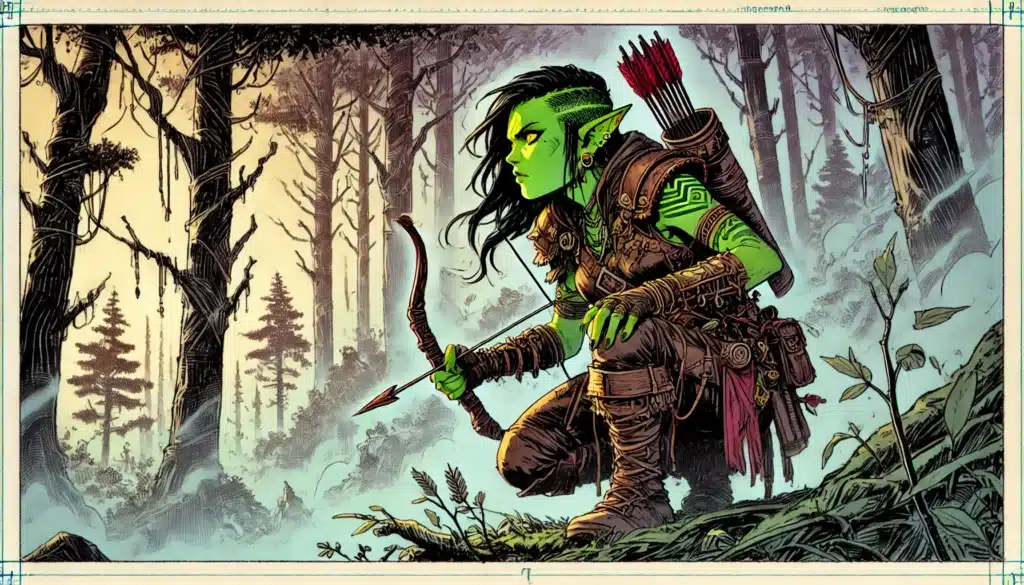
AI-Driven NPCs in Video RPGs (Developer Tools)
AI’s reach doesn’t stop at the tabletop. In the world of digital RPGs, artificial intelligence is giving rise to the next generation of characters, quests, and branching storylines—ready to inspire both gamers and tabletop GMs alike. The most cutting-edge tools are aimed squarely at game developers, but their implications ripple out into every form of roleplay.
The breakthrough? Intelligent, memory-aware NPCs that respond to player actions and carry on conversations as nuanced as your best improv GM. Developers utilize these systems to create living, breathing worlds where every townsperson, shopkeeper, or rival has both agency and narrative potential. Dynamic quest generation and emergent story arcs are growing more convincing, providing inspiration for new forms of player-driven storytelling—even at the real-world table.
For devs, these AI models are engines of both content and complexity. For GMs and players, they offer a tantalizing glimpse of where narrative and worldbuilding might head next: fully dynamic campaigns, where every action matters and every NPC has a story to tell.
Below are the tools shaping this brave new world, primed to cross-pollinate with the tabletop in ways we’ve only begun to imagine.
Inworld AI
Inworld AI is the toolkit of choice for developers eager to bring NPCs to life through truly responsive, conversational AI. At its core, Inworld lets devs define a character’s persona—habits, backstory, goals—and then unleashes the AI to handle unscripted, evolving dialogue, either through text or synthesized voice. The result is characters who can banter, scheme, remember your past choices, and adapt their behavior accordingly.
Inworld’s capabilities are already rippling through the modding scene. Skyrim AI mods have added believable, dynamic NPCs, while immersive cyberpunk demos showcase fluid, system-wide interactions that hint at the digital RPGs of the future.
Use Cases:
- Video game devs: Integrate truly dynamic, living characters into their games
- GMs running digital tabletops: Use AI NPCs for more vibrant online play
- Players: Chat with fictional characters for creative writing or inspiration
Pricing includes a free developer tier for experimentation and usage-based commercial licenses for deployed games.
Inworld AI is a clear signpost for the future: games—and potentially tabletop sessions—populated by characters as reactive and unpredictable as real people. For now, it’s a dev-first tool, but anyone curious about narrative evolution should watch its progress closely.
The echoes of Inworld’s tech will soon reach the TTRPG sphere. As GMs experiment with digital tools, expect deeper, more naturalistic NPCs to become standard both on screen and around the table.
⚔️ Fantasy RPG Random Tables Books
Make life as a Gamemaster easier…
If you play Dungeons & Dragons, Pathfinder, or other fantasy RPGs, this
RPG random tables series
is packed with encounters, NPCs, treasure, and more. Available in eBook or print—either way, you’ll have a wealth of adventure ideas at your fingertips.
Virtual Tabletops with AI
Foundry, Roll20, and other VTTs stand at the threshold of a new era: AI integration. While still an emerging trend, third-party modules are already allowing users to auto-generate descriptive text, NPC names, or encounter flavor with just a click. Some tap into ChatGPT or similar APIs, letting GMs improvise on-the-fly when players wander off script.
Native AI support is likely within the next year or two, making these features seamless and accessible for every campaign. Imagine right-clicking on a map square and instantly populating it with a locale history, shopkeeper’s bio, or relevant quest tidbit, all tailored to your homebrew world.
Use Cases:
- Streamlining GM workload: Automate repetitive or detail-heavy tasks during play
- Dynamic content in VTTs: Expand beyond static assets with instant, story-relevant text
- Instant GM reactions: Generate flavor or plot hooks in response to unplanned player actions
Current modules are mostly community-built “sidecars” rather than official features, so pricing depends on your AI API usage (often pay-as-you-go for text calls to GPT-4 or similar).
VTTs are poised for a leap—within a year or two, expect native, point-and-click AI features woven into every major online RPG platform.
For GMs, it’s a new partner: one that picks up the creative slack, enriches environments, and ensures that even the most unpredictable session never lacks for detail.
AI RPG Video Games
The line between GM and AI is vanishing fast, as video RPGs like Origins and AI-enhanced Bannerlord mods now offer players truly emergent game worlds. These platforms don’t just provide static dialogue trees—they spin new story arcs, invent NPC personalities, and breed twists in real time. Some even take user input to change the tenor of entire campaigns on each playthrough.
For players, the appeal is immediate: RPGs that always surprise and adapt, offering endless replayability and a taste of what it would be like to have a world that’s constantly being remade by your actions. For developers, these are sandboxes for testing next-gen narrative engines; for TTRPG hobbyists, sources of inspiration—what if your table adventures evolved this way too?
Use Cases:
- Players: Enjoy open-ended, fully AI-driven game experiences
- Developers: Experiment with engines that generate content on the fly
- Hobbyists: Peek at the future of real-time worldbuilding for RPGs
Pricing is as varied as the games themselves: most are consumer-facing, sold as standard games or mods, and sometimes bundled into broader platforms.
This trend is worth watching, even for die-hard tabletop GMs. What’s possible in a digital space today might soon inform tomorrow’s best TTRPG tools—not to mention fuel your next campaign’s ambitious twists.
Video RPGs driven by AI are in their infancy, but every new release pushes the boundaries of procedural storytelling. If you’re curious about where real-time AI narration could go, these games are the front line.

Final Thoughts on AI-Powered RPG Tools
We are living in a singular, electrifying moment for the world of tabletop and narrative RPGs. Where once imagination met the limits of time, energy, and GM stamina, AI is now smashing through those barriers, revealing new landscapes at every turn. The spectrum of tools available in 2025 is nothing short of staggering: from mechanics-heavy stat generators to lyrical narrative partners, from visual art engines to campaign-coherent lore managers, the boundaries of what players and GMs can accomplish are expanding at an unprecedented rate.
The magic truly happens in the hybrid. Use a text generator for deep lore; splash in an AI portrait for every PC; let a digital co-GM track session continuity and fill in the gaps when you’re out of steam. These tools, when combined, open rifts of creativity that neither human nor machine could achieve alone. What used to take hours—plotting maps, sculpting backstories, populating entire towns—now takes minutes, leaving more time for what makes TTRPGs magical: emergent story, laughter, and surprise.
Of course, this new world isn’t without a learning curve. Some platforms demand curiosity and tinkering, while others offer drop-in, plug-and-play simplicity. But even the most tech-wary GM can find something in this gleaming toolbox to lighten the load or spark the next big idea. AI doesn’t supplant creativity; it magnifies and energizes it, acting as both safety net and springboard.
Perhaps most heartening, the pace of innovation shows no sign of slowing. Every few months, we see new integrations, smarter models, tougher worldbuilding challenges met with more elegant, adaptable solutions. The old headaches of prep and session fatigue are yielding to a golden age of possibility, where the only remaining limits are the boundaries of your group’s imagination.
So gather your dice, open your digital notebooks, and dive in. With AI-powered RPG tools at your side, you’re not just playing a game—you’re charting new frontiers for storytelling, creativity, and camaraderie. Welcome to the future of role-playing: more vivid, more immersive, and more collaborative than ever before.

